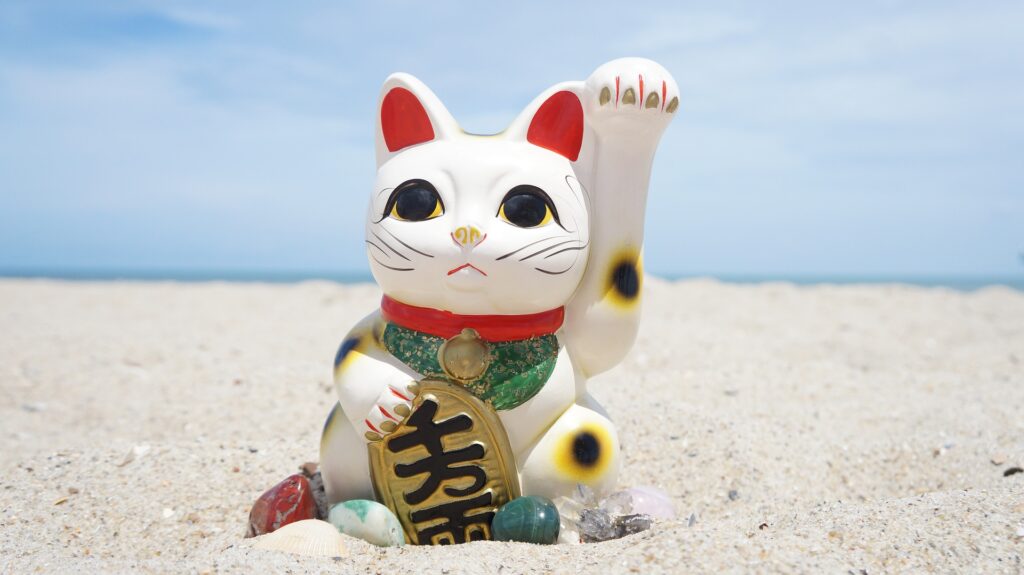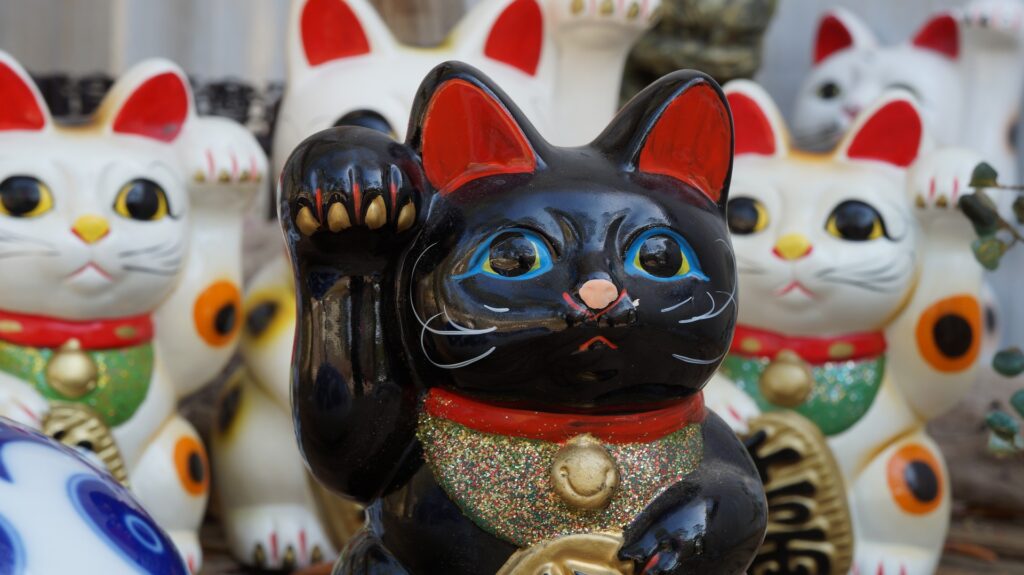Cats are one of the most popular pets in the UK, second only to dogs, and form an integral part of our everyday lives.
In addition to this, however, cats have an air of mystery surrounding them, with a whole load of myth and legend preceding them. We’ve all heard the expression that ‘cats have nine lives’, a reference to their indisputable ability to avoid danger time and time again – it’s really quite something!
If you’ve ever walked through Chinatown you’ll have noticed many small cat figurines perched on window ledges and positioned by tills. Maneki Neko, or the Fortune Cat, is a lucky charm that is popular in Chinese and Japanese cultures, where it is seen as a talisman that attracts good luck and fortune for its owner.
Here’s all you need to know about Maneki Neko…

What Does Maneki Neko Mean?
The Fortune Cat is known as Maneki Neko in Japanese, which translates as “beckoning cat,” an allusion to its waving arm. It is believed that the arm is waving good fortune towards its owner.
It has also been referred to as Lucky Cat, Welcoming Cat, and Money Cat.
What Is The Legend Behind The Fortune Cat?
Maneki Neko first appeared during the Edo period in Japan (17th – 19th century), with a couple of popular legends explaining its origins.
The first tells of a wealthy man who took shelter from a rainstorm under a tree by a temple. He followed a cat that seemed to be beckoning to him inside the temple, after which lighting struck the tree that he was sheltering under. Grateful for the cat saving his life, he became a benefactor of the temple and brought it much prosperity. After he died, a statue of the cat was erected in its honour.
The second legend tells of a geisha and her pet cat. While the cat was one day tugging at her kimono, the owner of the brothel thought the cat was possessed, so he sliced off its head with a sword. The flying cat head is said to have landed on a snake about to bite and absorbed all of the venom, saving the life of the would-be victim. Distraught at the death of her cat, one of the geisha’s customers subsequently made a statue of the cat to cheer her up.

What Does The Raised Paw Mean?
The raised paw of the Fortune Cat means something different depending on which paw is raised.
If the left paw is raised, it’s supposed to attract custom, whilst the right paw invites good fortune and money.
Both paws raised are said to bring about both of the above and additionally represent protection – we wouldn’t say no!
What Do The Fortune Cat’s Colours Mean?
Whilst the most common Maneki Neko are white with orange and black spots, there are several colour variations that have different meanings:
- Calico – Traditional colour combination, considered to be the luckiest
- White – Happiness, purity, and positive things to come
- Gold – Wealth and prosperity
- Black – Wards off evil spirits
- Red – Success in love and relationships
- Green – Good health
Fortune Cats Today
In Japan, cats are still viewed as symbols of luck and fortune and are elevated to a god-like level.
Walk around Tokyo and you’re bound to see cat faces on every product that you pass. Take Hello Kitty, for example – it’s one of Japan’s biggest and most famous exports!
There are believed to be over 7 million cats in Japan and 50 million in China, some of the highest numbers globally, with their presence still a symbol of fortune and protection for people today.
Whether there’s any truth in the myth we don’t know, but whether it’s true or not, we love how revered cats are over there – what matters is that they’re loved and bring about happiness (and anything else is a much-welcomed bonus)!
Summer holiday booked but still looking for pet care? Perhaps Tailster can help! We’ve a range of fully vetted carers across the UK, available to tend to your pet care needs as and when you require. For more information on our full service, click here.